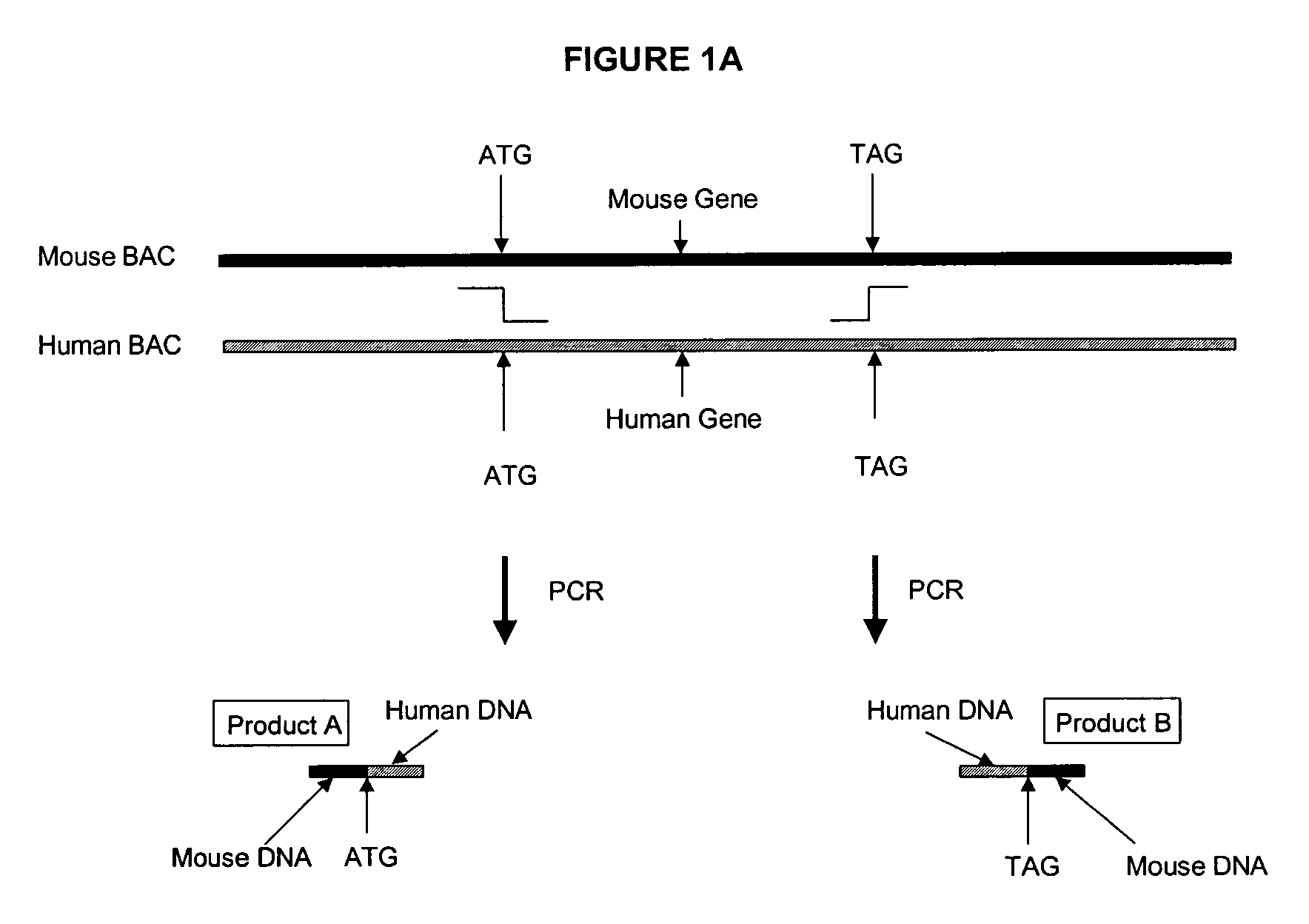Methods and compositions for the generation of humanized mice
a technology of humanized mice and compositions, applied in the field of humanized mouse generation, can solve the problems of loss of post-transcriptional control mechanisms (e.g. those that work during intron splicing) and are doubtless the most powerful animal tools
- Summary
- Abstract
- Description
- Claims
- Application Information
AI Technical Summary
Problems solved by technology
Method used
Image
Examples
example 1
Development of a Mouse Expressing Human PXR Using BAC
[0118] Using BAC technology the entire mouse PXR coding region will be replaced with the corresponding human PXR coding region (including introns) by homologous recombination. Human PXR gene expression will be detected in the transformed mice by Northern analysis and PCR. Particular attention will be made to determine whether human PXR is expressed in liver and gastrointestinal tract, and other tissues that normally express the receptor in humans. This will distinguish this approach from any other transgenic procedures used to express human PXR in mice.
[0119] First, an E. coli host is needed that has certain characteristics that allow stable propagation of large mammalian DNA inserts in the BAC vector, and is able to selectively carry out proper homologous recombination when needed. The strain HS996, which will be used for these studies, has been constructed to accommodate large BAC inserts, and its recA.sup.+ derivative HS985 has...
example 2
Test Response of Mice Expressing Human PXR to Drugs That Induce CYP450 Expression in Humans
[0127] Animals developed in Example 1 will be tested for ability to respond to drugs that induce human CYP450 expression. The drugs to be tested are the anti-microbial drugs rifampicin and clotrimazole. Their abilities to increase the expression of the major CYP450 enzymes will be measured, including CYP3A, CYP2B6 and CYP2C9 in liver and other tissues that normally express PXR in humans by Northern analysis, RNAse protection assays and by ELISA. As a control, the effects of pregnenolone 16.alpha.-carbonitrile, a molecule that stimulates mouse PXR to induce CYP450 but does not interact with human PXR will also be tested. Additionally, it will be tested whether these drugs increase the expression of P-glycoprotein (MDR1) a major drug efflux transporter involved in drug elimination under the regulation of human PXR. If the mice respond to drugs that normally stimulate human PXR, the first step in...
PUM
| Property | Measurement | Unit |
|---|---|---|
| temperatures | aaaaa | aaaaa |
| temperature | aaaaa | aaaaa |
| temperature | aaaaa | aaaaa |
Abstract
Description
Claims
Application Information
 Login to View More
Login to View More - R&D
- Intellectual Property
- Life Sciences
- Materials
- Tech Scout
- Unparalleled Data Quality
- Higher Quality Content
- 60% Fewer Hallucinations
Browse by: Latest US Patents, China's latest patents, Technical Efficacy Thesaurus, Application Domain, Technology Topic, Popular Technical Reports.
© 2025 PatSnap. All rights reserved.Legal|Privacy policy|Modern Slavery Act Transparency Statement|Sitemap|About US| Contact US: help@patsnap.com



